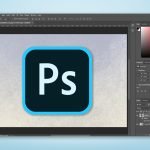Introduction.
Saving your Photoshop pictures as JPEG files is a common and essential step in the digital design and photography workflow.
JPEG is a widely supported image format that offers a good balance between file size and image quality, making it ideal for sharing, publishing, and uploading images on the web.
Adobe Photoshop provides a straightforward process for saving your pictures as JPEG files, allowing you to preserve the visual integrity of your designs or photographs while reducing file size for efficient storage and distribution.
In this guide, we will walk you through the step-by-step process of saving Photoshop pictures as JPEG files. We will explore the necessary settings and options to ensure optimal image quality and file size compression.
By mastering this skill, you’ll have the ability to save your Photoshop creations in a widely compatible format that can be easily shared and utilized across various digital platforms.
By the end of this tutorial, you will have a solid understanding of how to save your Photoshop pictures as JPEG files, empowering you to effectively store, distribute, and showcase your digital artwork or photographs.
So, let’s delve into the world of saving pictures as JPEGs in Adobe Photoshop and discover the techniques that will enhance your digital design and photography workflow.
How Do I Save Photoshop Pictures as JPEGs?
JPEG (Joint Photographic Experts Group) is a widely used image format known for its ability to balance file size and image quality.
By saving your Photoshop pictures as JPEGs, you can efficiently store, share, and publish your images on the web without sacrificing too much visual integrity.
Adobe Photoshop provides a simple process for saving your pictures as JPEG files, ensuring that your creations can be easily accessed and viewed by others.
In this article, we will guide you through the step-by-step process of saving your Photoshop pictures as JPEG files.
By following these instructions, you will be able to preserve the quality of your images while reducing file size for more convenient storage and sharing.
Let’s dive into the process and unleash the power of Photoshop to save your pictures as JPEGs.
Step 1: Finalize Your Image.
Before saving your picture as a JPEG, make sure you have finalized the design or editing process in Photoshop.
Adjust the levels, colour balance, contrast, or any other necessary adjustments to achieve the desired appearance.
Step 2: Go to File > Save As.
Once you are satisfied with your image, go to the top menu and select File > Save As. This will open the “Save As” dialogue box, allowing you to specify the file name, location, and format for your image.
Step 3: Choose JPEG Format.
In the “Save As” dialogue box, choose JPEG from the format drop-down menu. This will ensure that your image is saved in the JPEG format.
Step 4: Adjust Quality Settings.
Next, you can adjust the quality settings for your JPEG file. A higher quality setting will result in a larger file size and better image quality, while a lower quality setting will reduce file size but may sacrifice some image detail. Use the slider to choose the desired quality level or enter a specific value.
Step 5: Optimize Options.
Click on the “Options” button to access additional settings for optimizing your JPEG file. You can choose between Baseline (Standard) or Progressive encoding, which affects how the image loads.
You can also select the desired colour space, such as RGB or CMYK, depending on your intended use.
Step 6: Save Your Image.
After adjusting the quality and optimizing options, click “OK” to save your image as a JPEG. Choose the desired location on your computer or external storage device and click “Save.”
Conclusion.
Saving your Photoshop pictures as JPEG files allows you to efficiently store, share, and publish your digital creations without compromising too much on image quality.
By following the step-by-step process outlined in this article, you can easily save your images as JPEGs in Adobe Photoshop.
Remember to finalize your image, go to File > Save As, choose JPEG format, adjust quality settings, optimize options if necessary, and save your image.
With this knowledge, you can confidently save your Photoshop pictures as JPEG files, making them accessible and shareable across various digital platforms.
So, embrace the power of Photoshop, optimize your image quality and file size, and share your visual creations with the world.






GIPHY App Key not set. Please check settings